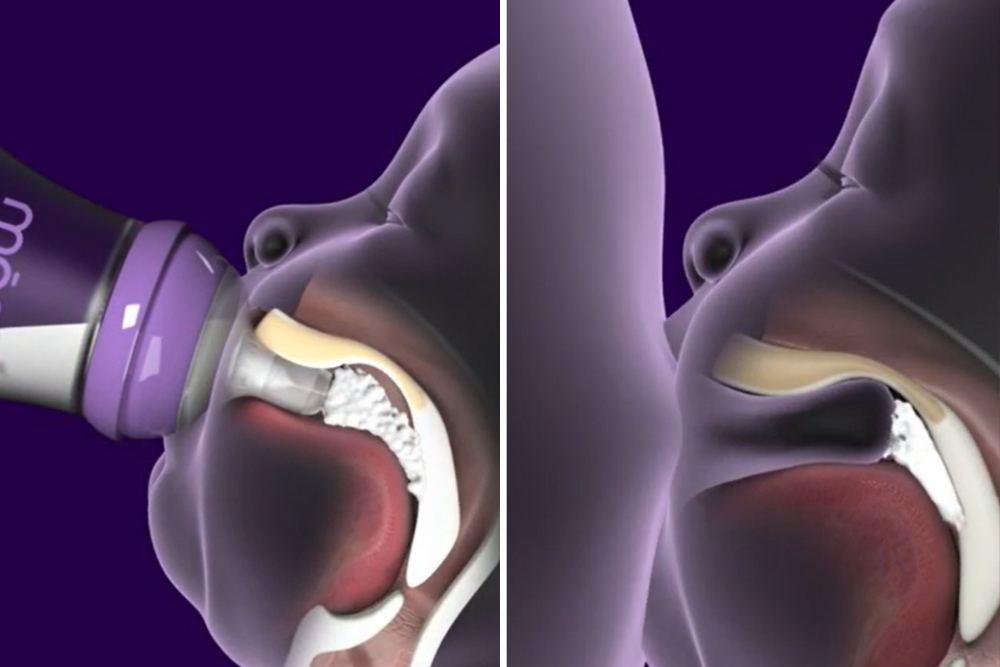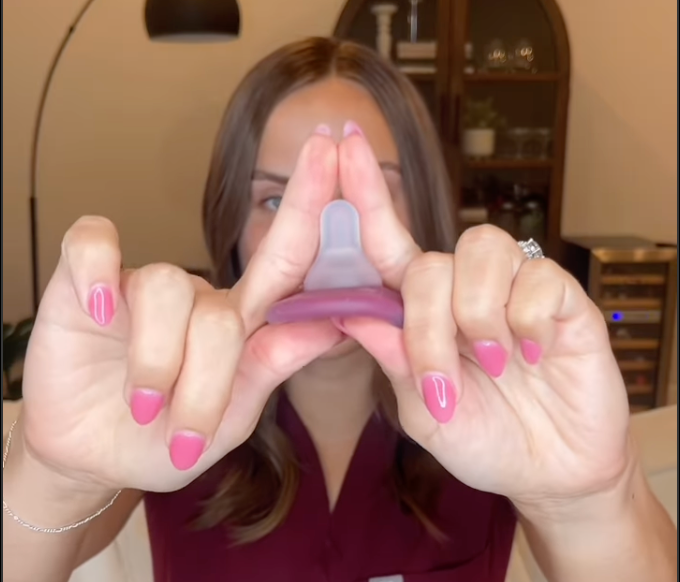Breastfeeding is a special and important part of bonding with your baby, but sometimes it doesn’t go smoothly. Many moms face challenges along the way, and that's where mōmi can make a big difference.
mōmi was designed for babies to feed actively, using the same orofacial muscles and suck, swallow, breathe pattern that they use at the breast. Professionals including speech-language pathologists, lactation consultants and pediatric dentists have found that mōmi is a helpful tool that can help start, improve and extend breastfeeding.
establish
Sometimes successful breastfeeding doesn’t happen right away. There can be unexpected milk supply issues, physical challenges, or delivery complications.
In these situations, the baby can use mōmi to learn the oral mechanics of nursing, then translate that skill to the breast when the time is right.
restore
Babies can lose interest in breastfeeding after a conventional bottle has been introduced.
mōmi has proven effective in restoring many breastfeeding relationships when used as a bridge, transitioning the baby from a conventional nipple back to the breast.
strengthen
The mōmi nipple requires the baby to use natural oral mechanics during feeding, without workarounds. It doesn’t allow the baby to extract milk passively or by squeezing the tip like conventional nipples do.
When the baby is struggling with sub-optimal oral mechanics at the breast, mōmi can be a tool to help overcome those patterns.
mōmi can also be a great tool for learning new, healthy oral mechanics after tethers have been released.
preserve
mōmi was designed to require both equivalent effort and similar function to breastfeeding.
This helps prevent the baby from developing a preference for either nipple over the other.
Many have found mōmi eases the transition from breast to bottle to breast and can help extend the breastfeeding relationship after the bottle has been introduced.
conclusion
Breastfeeding can be a wonderful experience, but it’s not always easy. Whether you’re working to establish a strong start, restore a lost connection, strengthen your baby’s oral skills, or preserve your breastfeeding journey after introducing a bottle, the mōmi nipple can be a valuable ally. By closely mimicking the natural mechanics of breastfeeding, mōmi offers a supportive and effective way to integrate a bottle into your feeding journey.
faq
What makes the mōmi nipple different from other bottle nipples?
mōmi’s babypace® 2 nipple is shaped to optimize baby’s ability to latch deeply. The nipple’s soft silicone forms a solid tip with one central duct, so that babies feed using suction and compression like when nursing. Compression is important for babies! Pressure against their soft palate helps the palate bones spread out, forming a broad dental arch and healthy, open airway. In addition, because it relies on the same oral mechanics as nursing, mōmi helps prevent the development of bottle preference and supports a smoother transition back to breastfeeding.
Can mōmi help if my baby is struggling to latch onto the breast?
Yes, mōmi can be a great tool for helping babies learn the correct oral mechanics needed for breastfeeding. It allows babies to practice these skills with a bottle before transitioning back to the breast.
For a baby who is struggling at the breast, starting with mōmi offers the benefit of:
- Measured feeds (so you know how much baby is eating every time)
- The same nipple every time (never engorged), making it easier for baby to focus on the feeding skills that they control.
- Allowing baby to practice latching widely and using the appropriate orofacial muscles to support their development until they’re ready and able to accept the breast.
- Consistent flow rate throughout each feed, allowing little ones to strengthen their feeding skills before they take on a strong letdown at the breast.
- Allowing family members and other caregivers to cover feeding whenever mom or baby feels too frustrated or overwhelmed to practice at the breast.
Can mōmi help my baby who has begun to refuse the breast after introducing another brand’s bottle?
By requiring similar effort and function as breastfeeding, mōmi helps ensure that babies can switch between bottle and breast without developing a preference for one over the other. But if your little one has already developed a preference for a conventional bottle nipple, mōmi may be able to help! Feeding therapists have successfully used mōmi to help restore breastfeeding using some of these strategies:
- consistently offering only mōmi and the breast for feeding
- making sure that baby feels safe and comfortable before offering the bottle. (see this post for some additional tips)
- beginning with a slightly higher flow rate, and stepping down after baby has the hang of it
Working with professionals, like a qualified IBCLC, can also be helpful, as they are trained to address or make referrals for physical, environmental, behavioral or developmental conditions that may be factors.
Is mōmi suitable for babies with oral restrictions, like tongue-tie?
Yes, mōmi can be particularly helpful for babies who have been diagnosed with tethers such as tongue-tie, lip-tie, or cheek-tie. When baby’s restrictions are not too severe, some pediatric dentists recommend starting with mōmi right away, to let baby work on strengthening their muscles. In more extreme cases, babies may need to wait until post-release to use mōmi, once they have the freedom of movement needed to effectively transfer milk from the bottle. (Don’t be alarmed if your baby tires quickly at first.)
Check out this blog post to read a speech pathologist's experience with her own daughter's tongue tie, and always consult trusted, qualified professionals if you have concerns about your baby’s feeding.




